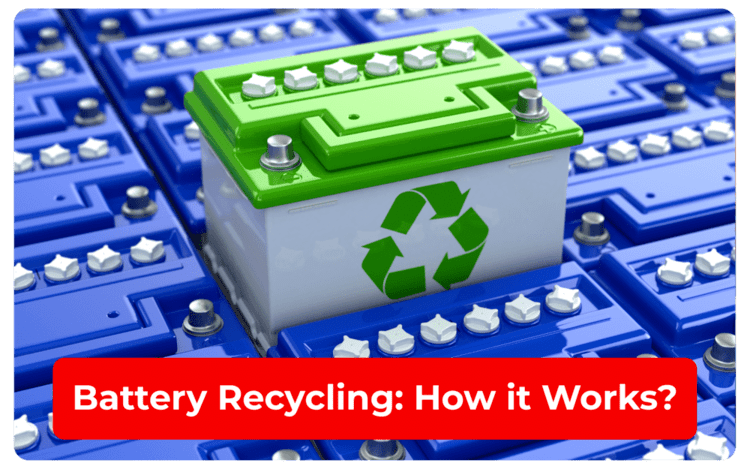Waste reduction and recycling are the wheels that keep civilization turning. Nevertheless, recycling a car battery requires a different set of steps than collecting plastic bottles or aluminum cans. To begin with, you'll need to transport it to a completely different establishment. There are many reasons why recycling is important for environmental protection, but reprocessing a battery pack is also important. The sulfuric acid in a battery pack and other toxic components should be discarded or reprocessed responsibly.
This means you can't simply toss your old battery in the recycling facility. Sixty to eighty percent of a battery pack can be recycled, but the rest needs to be disposed of with the right equipment and caution.
The Recycling Procedure: What Exactly Occurs?
● A battery recycling plant will separate the polycarbonate, lead, and fluid balance from your old battery before processing it.
● The outer plastic shell is dismantled and recycled into pellets. These granules are recycled into battery cases for other automobiles.
Similar to how plastic is processed, lead is converted into ingots by melting it down. In addition to the battery grid, the terminals and posts also contain lead. The recycled lead will be used to make components for new batteries. Any leftover lead oxide can be recycled for use in new batteries.
The recycling process relies heavily on electrolytes. Sulfuric acid is commonly used as the ionic conductor in car batteries. Toxic fumes can be released from sulfuric acid if it is not managed and discharged into the environment.
Battery acid is converted to water when neutralized by a basic chemical. The water undergoes purification and inspection before being released into the sewage system. Alternatively, the battery acid can be processed into sodium sulfate. Sodium sulfate is found in recyclable crystals, fabrics, and liquid soap.
The Importance of Reusing Old Batteries for New Vehicles
The recycling rate for lead-acid batteries is reported to be 90% by Battery Council International. Consider that annually, only 26% of glass containers and 55% of aluminium cans are recycled, and you'll see how remarkable this is. That shows how seriously people take the issue of recycling battery packs, which they should. Eradicating car battery waste requires processing the acid, and the plastic and lead components can be recycled into new battery packs.
We at Tesla Power USA, believes in making environment safe and healthy for everyone to live and hence promote battery revival or rejuvenation which is a process of giving second life to the old lead acid batteries. This is a process through which any old lead acid battery can be revived at just ~15% cost of buying a new battery. You can visit the nearest Tesla Power Shop to avail the same service. It’s time to give back to the nature and society by our small steps that can really make a huge difference.
For the batteries that can be revived, you can always go for the new ones. Tesla Power Shop is a hybrid module of sales and service where we do not only service or revive you old batteries but you can also purchase new batteries of any kind, application or capacity. Explore wide range of inverter batteries, four wheeler batteries, two wheeler batteries, solar batteries, commercial batteries and more at the most affordable cost.






